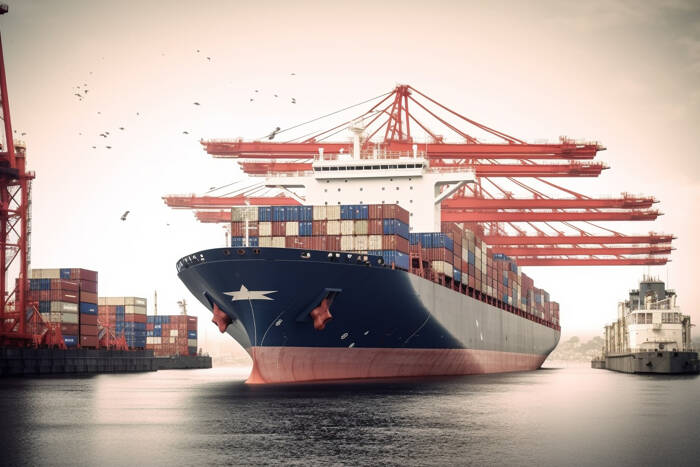Neither side appears willing to back down before President Trump and President Xi meet at the end of the month. However, recent Chinese economic indicators and concerns about slowing US growth could give Beijing the upper hand in trade talks.
China’s economic strength increases pressure
The US administration wants to cut its dependence on China for rare earth minerals. However, Trump appears distressed by China’s move away from US soybeans, a sector where the US has been dependent on Chinese demand. Meanwhile, China’s September trade data indicated that manufacturers successfully gained new trading partners, removing their dependence on US demand.
On Wednesday, October 15, UBS raised China’s 2025 export growth forecast to 4.5% from 1%. The upward revision came after impressive September trade data. Exports rose 8.3% year-on-year in September, while imports rose 7.4%, indicating a lasting increase in demand for Chinese goods.
CN Wire, reporting the UBS export growth estimate, said:
While renewed US-China trade tensions could hit its export shipments to the US, “the likelihood of a further decline may not be as high,” the economist says. Meanwhile, China’s overall export momentum has been supported by shipment growth to the rest of the world.
UBS’s U-turn on the potential impact of US tariffs on demand for Chinese goods came after a wave of revisions to GDP growth forecasts. Notably, the World Bank raised its GDP growth forecast for 2025 to 4.8% from 4.0% in April.
Inflation concerns increased in US and EU
Meanwhile, markets are betting on the Fed cutting interest rates in October and December to boost the US economy. The Fed faces the risk of stagflation as economic growth slows while prices remain high.
Adding to the US administration’s troubles are concerns about the potential impact of the European Union’s imposition of sanctions on Chinese goods on euro zone inflation. The sanctions could curb Chinese shipments to the euro bloc, leading to more expensive goods. The US may face a similar dilemma in the event of a full-scale trade war. Beijing seems unperturbed by American threats. China has warned that it is ready for a trade war if provoked.
Trade war or sham?
US Trade Representative Jamieson Greer, commenting on the threat of imposing additional 100% tariffs on Chinese shipments to the US, said:
“We think we’ll be able to work through it, but again, we can’t have a situation where the Chinese maintain this regime, where they want veto power over the world’s high-tech supply chains. I think they’ve realized they’ve overstepped.”
Greer also rejected speculations that China had the upper hand and said America had its own influence. He highlighted China’s own export-driven economy, declining wealth and high unemployment.
China’s unemployment rate rose to 5.3% in August from 5.2% in July, with youth unemployment rising to 18.9% (July: 17.8%). While a rebound in Chinese exports could ease labor market problems, Beijing remains committed to the transition toward a consumption-driven economy.
China aims for domestic demand
According to CN Wire, Beijing announced plans to increase financial support to boost consumption, saying:
“Guiding financial institutions to innovate products and services that support financial support for consumption.”
The Communist Party of China will convene a plenum (20-23 October) to formulate its next five-year plan. Economists expect lawmakers to announce measures to boost domestic spending, while also focusing on high-tech manufacturing research and industrial upgrading. Notably, the plenum will take place before the APEC summit.
Mainland equity markets rise despite tensions
Mainland equity markets advanced on Thursday, October 16, extending their gains from the previous day. Expectations of an uptick in GDP growth and further policy measures improved sentiment.
Still, the indices are down from their 2025 highs, with gains limited by fears of a full-blown US-China trade war.
The CSI 300 rose 0.24% in early trading on Thursday, October 16, while the Shanghai Composite Index rose 0.17%. However, the Hang Seng index remained in the lead, gaining 0.41%.
The market is betting on more stimulus to boost consumption, address high unemployment and support the real estate sector.
US tariffs have failed to impact demand for Chinese goods, boosting demand for mainland-listed stocks. The CSI 300 is projected to rise 17.4% year-to-date in 2025, with the Shanghai Composite Index rising 16.8%.
Despite strong upside potential for 2025, downside risks remain. Without meaningful policy support from Beijing, a full-blown trade war could derail the rally.


